
A Look Into Harajuku Fashion| 40 Top Trendy Style Ideas|
When it comes to fashion that goes against the rules and is super creative Harajuku style is in a league of its own. Born in the streets of Tokyo Harajuku fashion is more than just clothes it’s a celebration of individuality self-expression and the art of mixing the unexpected.
From pastel kawaii outfits to edgy punk looks Harajuku has something for everyone. Its a style playground where layering patterns clashing colors and oversized accessories are not just allowed they’re encouraged. Whether you like the whimsy of Lolita fashion the rebelliousness of Goth punk or the quirkiness of decora Harajuku has a way of inspiring fashion lovers all around the world.
Here we go into the world of Harajuku fashion and share 40 trendy style ideas. Whether you need inspiration to update your wardrobe or just curious about what Harajuku is all about you’re in luck. Let’s go for a walk in Harajuku and see how you can add some of that magic into your style!

What Is Harajuku Fashion And It’s Origin?
Harajuku Fashion is a colorful and eclectic style that has taken the world of fashion enthusiasts by storm. This bold aesthetic was born in the Harajuku district of Tokyo, famous for its trendsetting colors, patterns and creative layering. Harajuku fashion has deep roots in Japan’s rich cultural history, as well as historical events that played a role in its evolution over the years.

Cultural Influences
One of Harajuku’s most iconic trends dates back to the 2000s. A hodgepodge of traditions, pop culture, and global trends, Harajuku has transformed itself into a mecca of self-expression and creativity.
Traditional Japanese clothing: Items such as kimonos, yukatas, and geta sandals frequently influence Harajuku ensembles. The average designs are layered with modern references to create fresh silhouettes.
Anime and Manga: Last but not least, Harajuku styles channel characters from popular anime and manga. Cosplay is to dress up as some favorite character and it makes the fictional world come alive in Harajuku as well.
Western outfits: Western outfit is one more fashion type pulling outfits inspiration from Harajuku outfits. The result is a style that combines punk, gothic and vintage pieces in a mashup of East and West.
Music & Dance — J-pop & Visual kei music scenes are very popular Depending on the trends, people mimic the bright, flashy looks of their favorite singers.
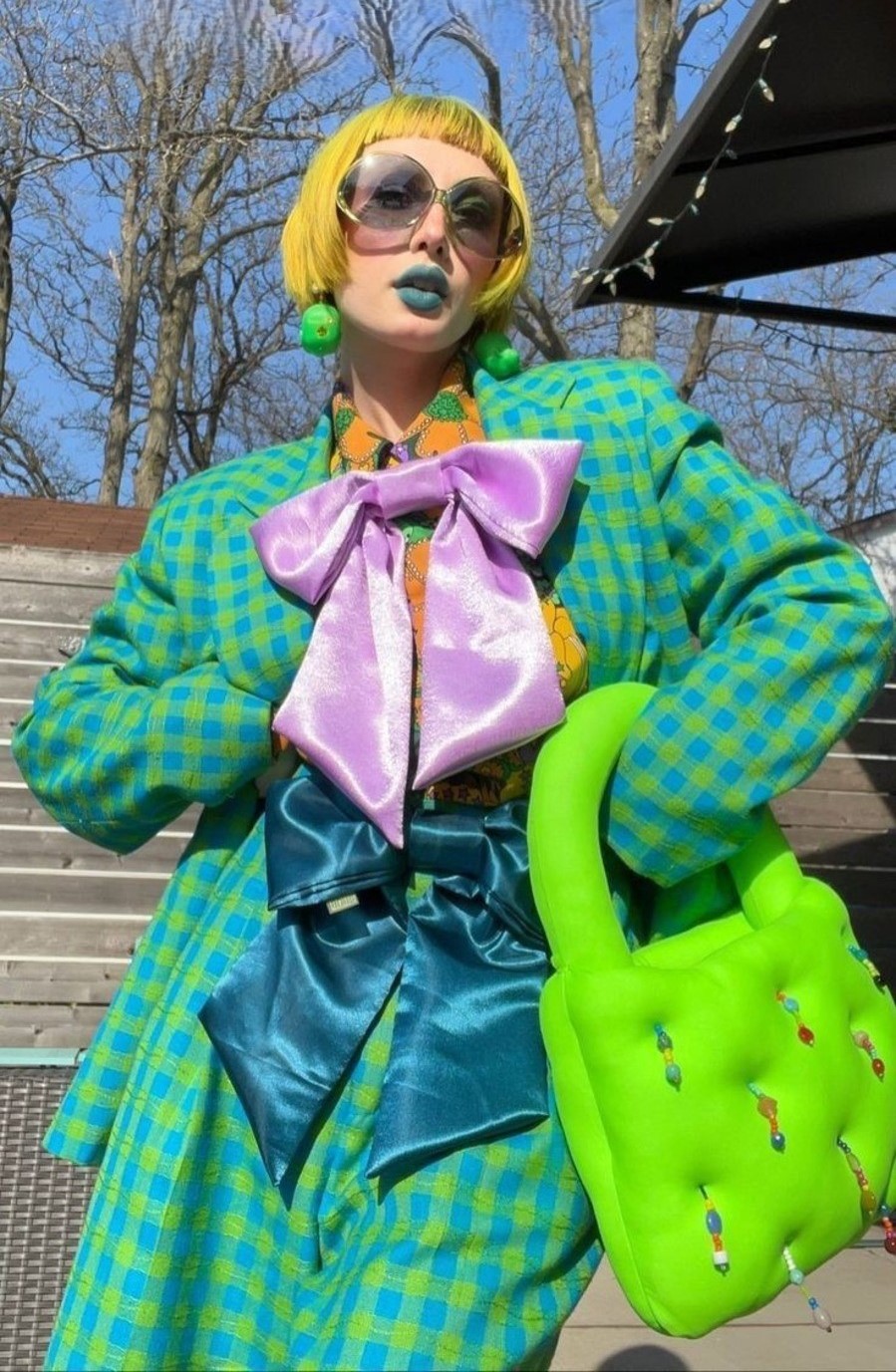
Historical Context
That being said, the history behind Harajuku fashion makes for equally fascinating reading. After World War II, Japan underwent a drastic transformation, giving rise to new cultural and fashion trends.

Reconstruction and Modernization After World War II: Following World War II, Japan was rebuilt and modernized at a rapid pace. It was during this period that Western influence began to seep into Japanese society and culture, including fashion.
The 1964 Tokyo Olympics: The 1964 Tokyo Olympics were instrumental in placing Japan on the world map. Nearby Harajuku, near the Olympic Village, also attracted international tourists and influenced a cross-pollination of cultural and fashion ideas.
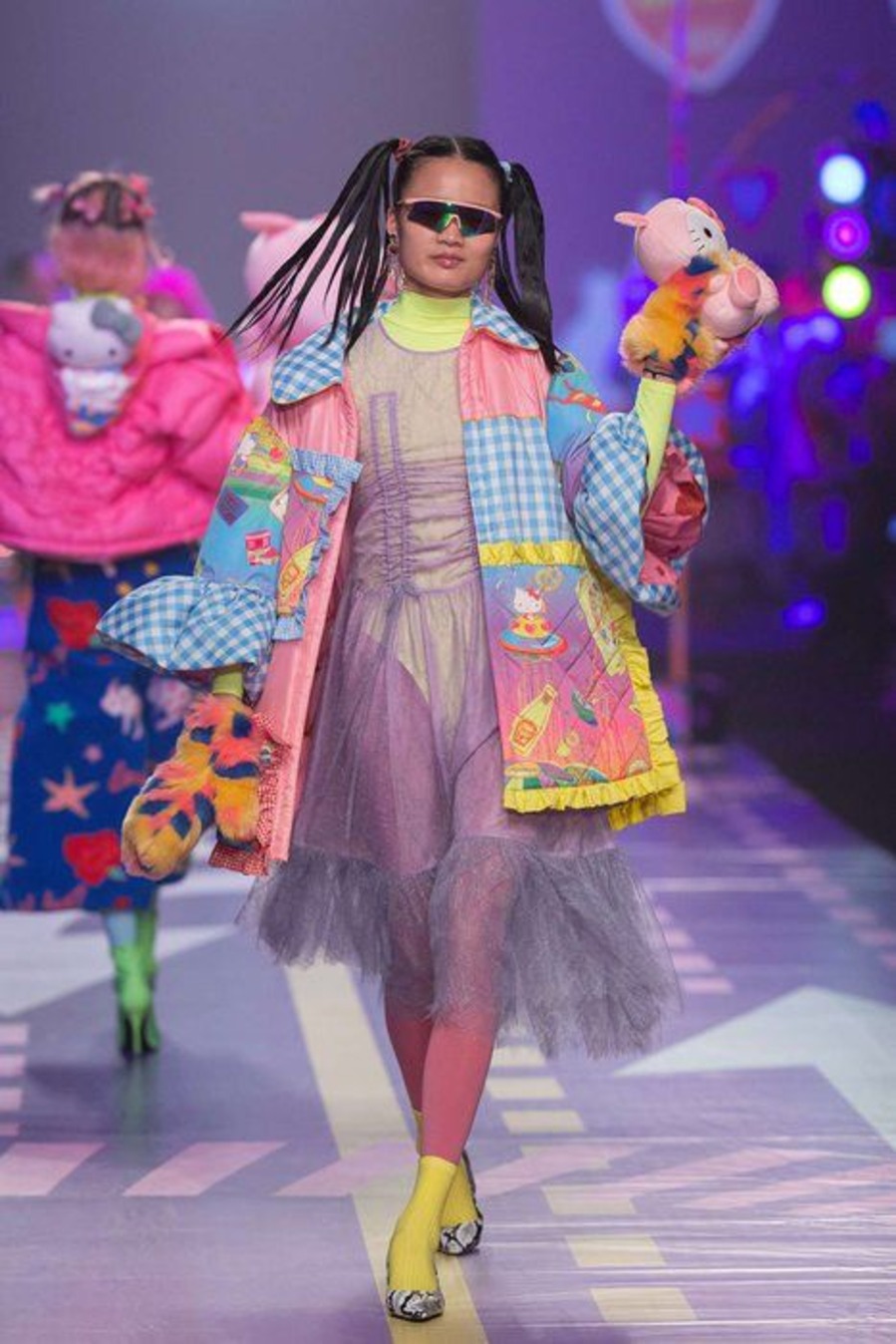
1980s Economic Boom: The economic boom of the 1980s brought prosperity to Japan. And with more disposable income, young people began to experiment with their style, giving birth to the diverse and eccentric styles which became popular in Harajuku.
Rise of subcultures: In the late 20th century, the pop culture in Harajuku created subcultures. With styles like the colorful Decora and Kawaii, contrasted by Gothic Lolita that embraced dark fashion, these subcultures added rich layers of diversity to the Harajuku fashion scene.

Why Harajuku Fashion Is So Popular?
And if there’s one thing Harajuku fashion is famous for, it’s breaking the rules. This Japanese street style is colorful, vibrant, unapologetically different, and has won hearts in every corner of the world. So what is it about Harajuku fashion that makes it so appealing? What makes it more than a trend? So let’s get lost in the colorful world of Harajuku to see what makes it one of the most prominent trends internationally.

It’s a Celebration of Individuality
On a fundamental level, Harajuku fashion is a study in self-expression. It can be a creative playground with no rules — combine patterns, layer loud colors and put on eclectic accessories is not just encouraged, but celebrated! Whereas mainstream fashion seeks to mold people towards a shared vision, Harajuku breaks away from that rigid narrative and allows people to make use of fashion to be their truest selves.
For many, this ability to dabble resounds powerfully, not least in a world with trends telling people what’s “in” or “out.” Harajuku is a reminder that fashion doesn’t have to have rules — flyaway fashion, if you will, that is whatever you decide it to be.
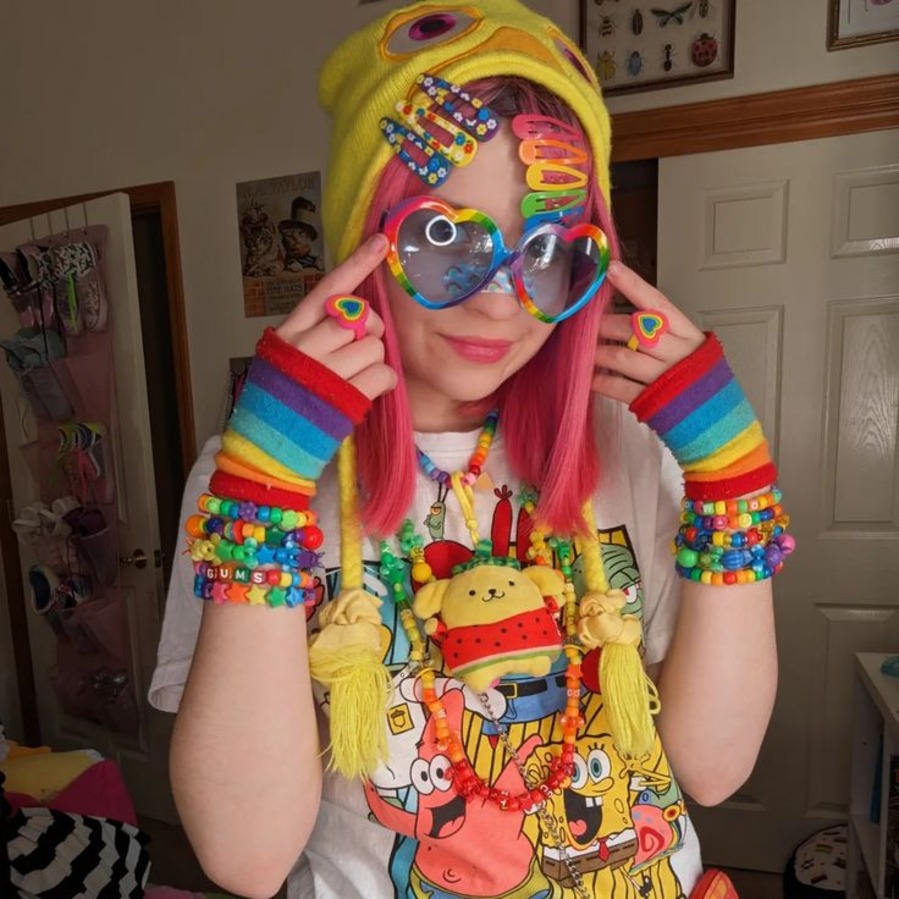
This is how remix culture works.
Harajuku fashion is a vacuum of influences. It’s a style that takes all of its cues, from classic Japanese motifs such as kimonos and yukatas, to Western punk, goth and Lolita aesthetics. This blend yields fresh, diverse, exciting looks that resonate across cultures and sensibilities.
Whether you are obsessed with the cuteness and frills of Sweet Lolita, the more edgy appeal of punk or the futuristic look of cyber fashion, there is something for everybody in Harajuku.

The Influence of Pop Culture
Not to mention, there was pop culture that popularized Harajuku. The early 2000s introduction of the Harajuku movement to the world stage through icon musicians like Gwen Stefani, and more recently, the online appearance of those in the movement, has left such an imprint on popular culture. Instagram, TikTok, and Pinterest are rife with Harajuku-style posts these days, so it’s easier than ever for people to discover — and fall in love with — the look.
Anime and manga have been a big part of it, including many fans, who bring their favorite characters and aesthetics to life with Harajuku fashion.

A Collective of Aligned Creatives
Finally, that brings us to one of the most beautiful aspects of Harajuku — the community. Fashion is not just wear, but a communal culture in Tokyo’s Harajuku area. Weekly locals and travelers gather to show off their outfits, new friends, and celebrate creativity.
This feeling turned into a way of connecting with people all over the world, and Harajuku culture has made its mark on communities all over the world. It’s more than a style; it’s a movement that unites people.”
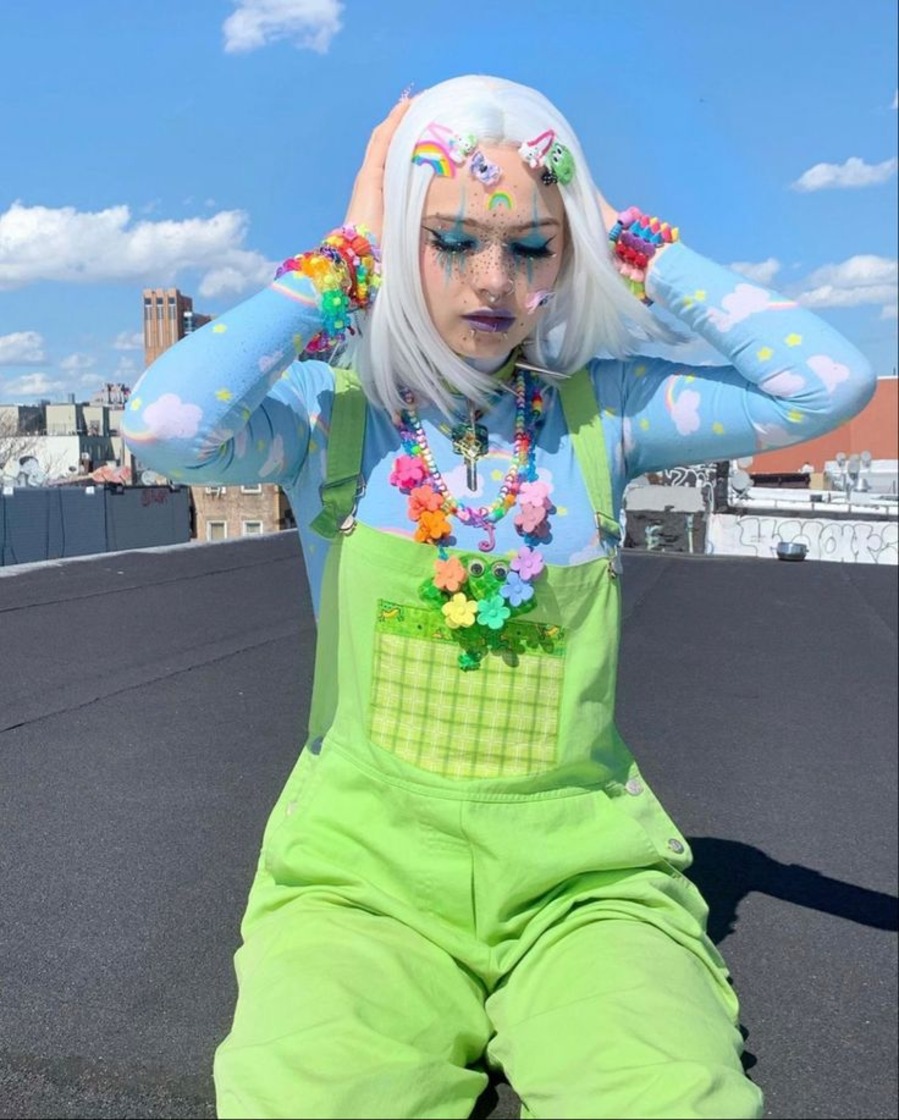
It’s Fun and Fearless
Let’s face it: Harajuku style is a blast. From rainbow-striped hair to giant bows, it’s a look that won’t take it self too seriously. That playful, carefree attitude is quite infectious, reminding us that fashion can serve as a source of joy and self-discovery.
As for those who wish to stand out, play and express themselves, Harajuku is the one and only source of inspiration.

Harajuku fashion culture is popular because it’s so much more than just clothing, it’s a lifestyle, it’s a form of art, it’s a worldwide celebration of individuality. It pushes boundaries, celebrates diversity, and inspires all people to live their truest, fiercest selves.
Whether you love its eclectic styles or just appreciate its dazzling sense of fearlessness, Harajuku fashion shows us that self-expression is always in style. So why not sprinkle a little Harajuku magic in your closet? Maybe you’ll even come across a piece of yourself along the way!

Where to Buy Harajuku Fashion?
If you love bold, eclectic clothes and want to incorporate some Harajuku-inspired flair into your closet, you may be wondering where to shop. The good news? You don’t need to live in Tokyo to wear Harajuku fashion! Whether shopping in physical stores or browsing online shops, there are countless places to discover unique pieces to express this lively style. Let’s explore your options!

Shopping in Harajuku, Tokyo
So if you happen to be in Tokyo, make sure to go to Harajuku’s shopping district. Here are some iconic spots:
Takeshita Street (Takeshita Dori): The famous street selling Harajuku fashion. There are cheaper boutiques and accessory shops, and clothing stores for every kind of subculture, from Lolita to punk.
Laforet Harajuku: A multi-floor fashion mecca, packed with high-end and indie Japanese brands that capture Harajuku’s experimental spirit.
Cat Street: This nearby street offers slightly more sophisticated takes on streetwear and fashionable clothing in between Harajuku hotspots.
Second-Hand and Vintage Stores: If you’re seeking that retro, recycled Harajuku-style fashion piece, shops such as Kinji and Chicago are the treasure troves.

With Harajuku Fashion Online Stores
If you can’t get to Japan, the internet is your friend. There are numerous online shops that carry Harajuku-style clothing and ship worldwide.
YesStyle — Known for providing an array of Japanese and Korean-inspired styles, from Harajuku-themed apparel and accessories
Tokyo Otaku Mode: This store’s specialty is anime and pop-culture items, but there are also fashion pieces that riff off Harajuku aesthetics.
Etsy: Featuring handmade and custom pieces, Etsy is great for finding one-of-a-kind Harajuku-inspired clothing and accessories from independent creators.
Harajuku Station: An online store for Harajuku streetwear with bold prints and colorful pieces.
Amazon and eBay: Both of these places are a go-to for finding inexpensive Harajuku-inspired pieces, whether oversized sweaters or kawaii accessories.
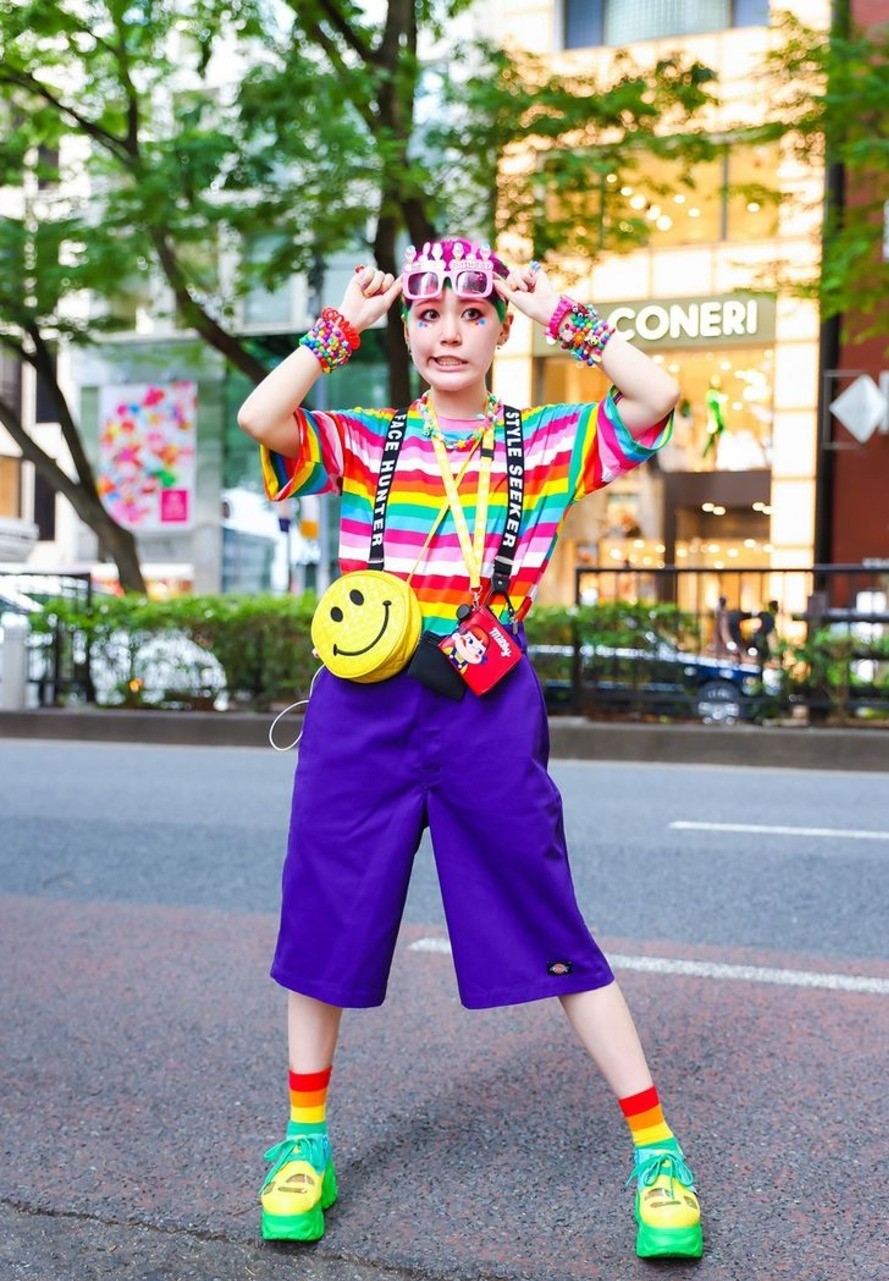
Harajuku fashion BRANDS & BOUTIQUES
There are certain brands that are almost synonymous with Harajuku fashion. You can buy them directly online or in stores:
• WEGO (Harajuku): Fun, affordable, colorful streetwear.
• Bodyline: For all things Lolita, dresses, accessories and shoes.
• Angelic Pretty: Also the queen of Sweet Lolita styles, featuring magical pastel dresses.
• DOKIDOKI: The quintessential Harajuku brand, complete with playful, neon-infused energy.
• Super Lovers and ACDC Rag: For punk, goth, and edgy Harajuku.
Local and Global Markets
Thrift Stores and Flea Markets: Trust your local thrift store to reflect the spirit of Harajuku; you never know what you’ll find. Aim for vintage or kooky, colorful items that match the aesthetic.
Pop-Up Shops and Collections: Many anime conventions and Japanese culture festivals have vendors or pop-up shops for Harajuku gear.

DIY Your Harajuku Look
Not what you’re looking for exactly? Get creative! Harajuku fashion is all about expressing your individuality, so combine pieces from your current wardrobe. Layer, play with prints and accessorize with chunky jewelry, wild socks or statement shoes.
Whether you’re window shopping down Takeshita Street or sifting through online shops, Harajuku fashion is about finding the pieces that make you feel confident and creative. With plenty of shopping options available, you’re a few clicks (or steps!) away from adopting this bold and colorful aesthetic.

Key Styles Of Harajuku Fashion
From Japan, Harajuku Fashion is colorful and unique. It reflects daring and distinct styles. Harajuku Fashion includes many movment and styles. These are the ones that are either dark and mysterious or are bright and playful. So let us take a look at two of the most iconic key styles Gothic Lolita and Streetwear.
Gothic Lolita
Gothic Lolita is an interesting type of style of Harajuku Fashion. It fuses Victorian refinement with a brooding, gothic edge. Fans of this style sport elaborate dresses. These dresses are often adorned with lace, bows and ruffles. The colors are often black, dark blue, or dark red. Here are some central attributes of Gothic Lolita:
• Headpieces: Cap or lace headbands.
• Dresses: Petticoated knee-length.
• Fashion: Platform boots or Mary Janes
• Accessories: CROSS, choking and parasol.
It’s not just a way of dressing. It also embodies a style and a love of dark chic.

Streetwear
In Harajuku, streetwear is all about color and statement pieces. It blends different styles and brands. A lot of the outfits are custom, one-of-a-kind. These looks are a way for people to flex their creativity. Streetwear lacks things like oversized clothing, gaudy colours, and striking designs.
Some of the major features of Harajuku Streetwear are:
• Graphic Tees: With loud prints and logos.
• Baggy: Loose-fitting and comfortable.
• Sneakers: Frequently limited edition and/or custom.
• Accessories: Hats, bags and statement jewelry.
This style also changes forms continuously. It bears the energy and spirit of creativity of Harajuku’s youth.

Iconic Trends of Harajuku Fashion
Harajuku fashion combines bright colours, loud prints, and the best elements from a range of subcultures. In this section, we put the spotlight on the most legendary trends that shaped Harajuku Fashion.
Decora
Decora fashion is maximalist and playful with its excess. It features an abundance of accessories, vibrant hues and a childlike sense of wonder. Decora fans wear layer upon layer of bright clothing, accessorizing from head to toe.

Key features of Decora include:
Hair Clips: A few dozen colorful hair clips and bows.
Bracelets and Necklaces: Stacked plastic, beaded, and rubber jewelry.
Colourful Threads: Dress in outfits that include mix-and-match patterns like polka dots, stripes, cartoon characters.
Scene Moves: Plastic figures connected to clothing or bags.
Fans of Decora tend to be pretty creative with their outfits. They’re inspired by playthings, cartoons and childhood memories. This style dates back to the 90s and is still quite popular with people who want to be the unique one in a crowd.
Read More: 20 Trendy Boho Fashion Ideas In 2025
Visual Kei
Visual Kei is a music/gender aesthetic that entails heavy rock music with extravagant outfits and cosmetics. This style is inspired from Japanese rock bands & musicians It liberties often include androgynous looks and drama. Essential characteristics of Visual Kei are:
• Bold Makeup: Heavy eyeliner, eyeshadow and even face paint.
• Elaborate Hairstyles: Big teased hair, often colored with wild hues.
• Costumes: Outfits that are dark, punk, or Victorian — the more details, the better.
• Accessories: Studded belts, gloves, and chokers.
Visual Kei fashion is all about self-expression and non-conformity. They like playing with gender roles and creating big, almost theatrical looks. It is a phenomenon that began in the late 1980s and persists as one of the main aspects of Harajuku Fashion.

Influential Figures of Harajuku Fashion
Harajuku fashion is a colorful, eclectic style that originated in the Tokyo district of Harajuku. It draws attention with its bright colors, its original patterns, and its audacious combinations. This fashion trend has been heavily influenced by some key players.
Fashion Icons
The pioneers of style that the fashion-icons on the streets of Harajuku inspire in others. These people tend to combine traditional Japon block-style pieces with modern twists. They break the mold with their daring decisions. Gazing at their Harajuku fashion:
Kyaru Pamyu Pamyu: A pop singer and model famous for her colorful and eccentric outfits.
Yoshiki: The mash-up of X Japan and shogun.
After performing Mirage, several girls got up to showcase their various Japanese otaku-inspired outfits to include: • Risa Nakamura: This was a popular model known for her “Lolita” style, dressed in frilly dresses and cute accessories.
These icons are also known for sharing their fashion on social media, reaching a worldwide audience. They also work with designers to cultivate original lines of clothing. Its sphere of influence is far from limited to Japan. 
Street Photographers
Harajuku fashion is also under the lens of many street photographers. They reflect the street and the people who wear this specific fashion. Magazines and online platforms often feature their photos. Some of the most well-known Harajuku street photographers are:
Shoichi Aoki: Creator of the Harajuku street style magazine, FRUiTS.
Takeshi Koga — His street photography style is alive and colorful with evidence from the streets of Harajuku
Yasumasa Yonehara: A photographer known for his unrefined take on Harajuku fashion.
They are among the photographers who help bring Harajuku fashion to the world. They frequently share their work on social media, where it reaches a wide readership. Their photos are about the spirit and creativity of the people, not just the clothes.
Also Read: The Evolution of Fashion Jockey: A Style Journey
Harajuku Fashion Events
Harajuku Fashion is a colorful and diverse style that started in the Harajuku area of Tokyo. Characterized by bold colors, innovative layering, and a mix-and-match approach, this unique trend in fashion has taken over. Fashion events are an important part of the fashion industry, as they allow designers, models and celebrities to showcase the latest trends, styles and designs.

Tokyo Fashion Week
Tokyo Fashion Week is a bi-annual fashion event. It showcases the latest collections from leading designers the world over. The event spans multiple days, filled with runway shows, exhibitions, and parties.
The event is important for the fashion industry, as it defines trends and allows for networking. Designers have the opportunity to show their innovative designs to the international market. That and other shows gather crowds of celebrities, influencers and media, some of them very high profile.
Here are some Tokyo Fashion Week highlights:
• Runway Shows: Leading designers showcase their newest collections.
• Exhibitions: Fashion accessories, textiles and more.
• Events: Networking events for designers with buyers and press.
Venues for the event are spread throughout different locations in Tokyo, all with their own vibes. Tokyo Fashion Week is more than high fashion. It also highlights street styles and emerging designers, so it adds up to a full fashion event.
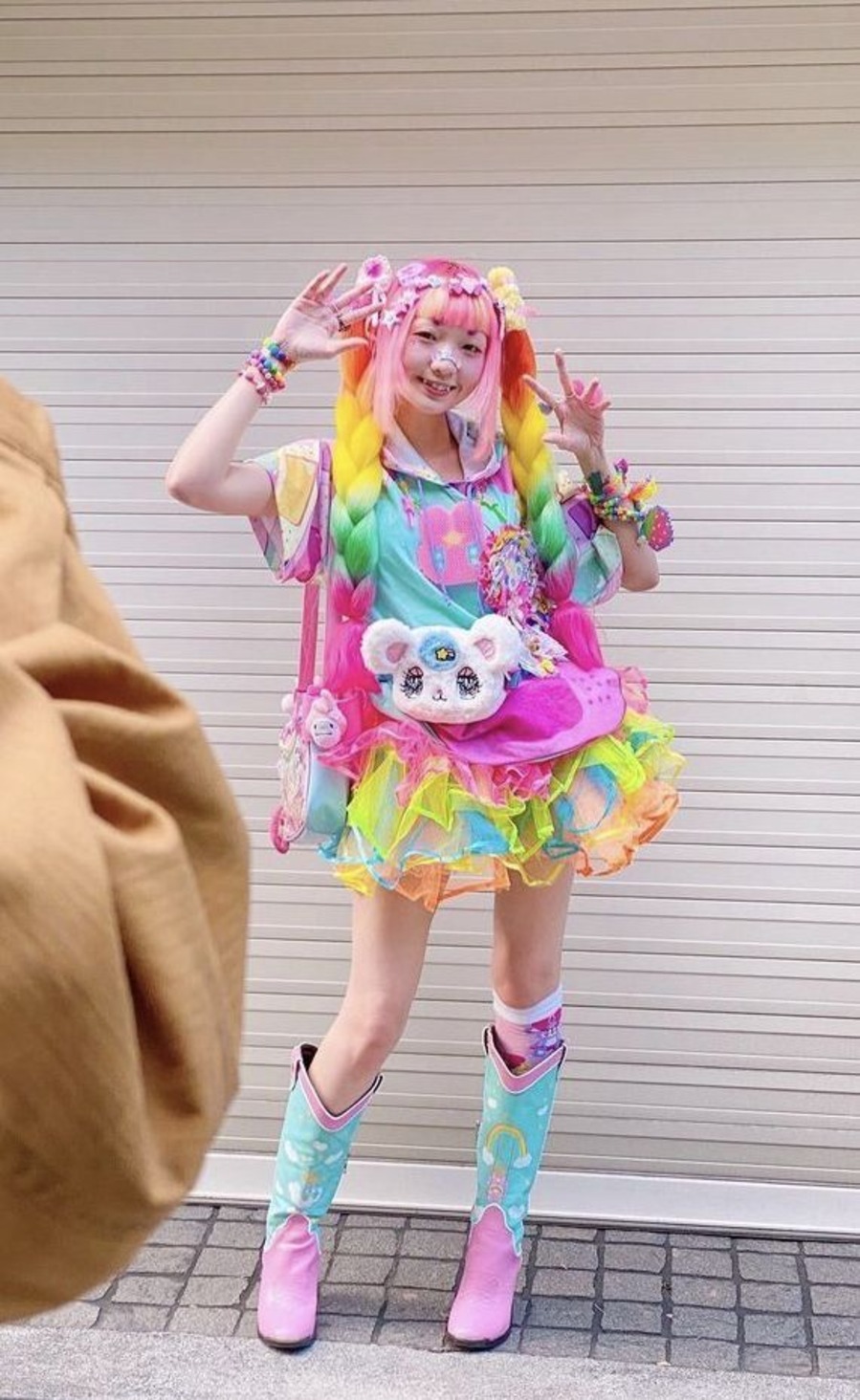
Harajuku Street Fashion Show
Harajuku Street Fashion Show is such an exciting event held at the Harajuku street. The fashion event takes place on the streets, which is what true Harajuku fashion is all about, unlike conventional fashion shows.
Anyone can attend this show, and you’ll see many local designers, fashionistas and influencers in the stands. From everywhere they came, to Umbrella, it is a celebration of individuality and creativity.
External Links: Harajuku Street Fashion Show Highlights
• Street Runway: Models in inventive outfits walk the street.
• Live Shows: Performances of music and dances enhance the celebratory spirit.
• Fashion Talk: Attendees can converse with designers and discuss upcoming trends.
The show is usually held on Takeshita Street, lined with colorful shops and cafes. This one is a busy place that embodies all of the culture around Harajuku fashion. Street Fashion Show has always been more than just a fashion show. For its part, Harajuku fashion is compressed into a cultural pill that embraces the eclectic and inclusive spirit of the neighbourhood.

Global Impact On Harajuku Fashion
Until a few years ago Harajuku fashion — a colorful, eccentric style that originated in the Harajuku district of Tokyo — was something outsiders would joke about. It combines classic Japanese garb with contemporary, punk, and gothic looks. The Harajuku fashion has been a great influence over world fashion trends and cultures.
International Brands
Several international brands have been mesmerized by Harajuku Fashion. Harajuku-esque elements have been appropriated into the collections of several global fashion houses.
Major brands influenced by Harajuku:
• Louis Vuitton – The brand has always maintained its status along the lines of luxury to edgy ingenuity, and it has even released collections incorporating Harajuku’s daring colors and patterns.
• Gucci – This brand encompasses the wacky, whimsical accoutrements and accessories commonly associated with Harajuku style.
• Comme des Garçons – A Japanese brand with a stranglehold on and that strangle have a stranglehold on Harajuku_style.
Just a few collaborations between Japanese designers and international brands that showcase Harajuku’s influence:
Japanese Designer International Brand Respective Collection
| Takashi Murakami | Louis Vuitton | Colorful Monogram |
| Yayoi Kusama | Louis Vuitton | Polka Dot Infinity |
Harajuku has gained a global audience through such collaborations. They contribute to its influence beyond Japan dougall.
Cultural Exchange
Harajuku Fashion is also essential to cultural exchange. It encourages the understanding of different cultures and the appreciation for those cultures.
Cultural exchange examples by Harajuku:
Fashion Shows — Street fashion shows in places such a Paris and New York bring the Harajuku aesthetic to new eyes.
Platforms such as Instagram and TikTok demonstrate Harajuku Fashion, enabling people of all diverse cultures to learn of and embrace the style.
Events and Festivals – Events such as Japan Expo in France and Anime Expo in the US promote Harajuku Fashion, gathering people together.
This kind of cultural exchange creates a shared sense of community among fashion lovers. They compel us to be accepting and prideful in our diversity in fashion. Internationally the impact of Harajuku Fashion on culture is significant. It has gained global attention and continues to influence fashion trends.
DIY Culture Of Harajuku Style
Fashion in Harajuku comes under a vivid and young style. One of the factors that makes it unique is strong DIY Culture. This culture inspires people to make outfits that are their own. It focuses on creativity and personal expression. People in the Harajuku district of Tokio display their handmade apparel, their accessories, their customized pieces, so you know each outfit is a personal statement.
Personal Expression
Harajuku Fashion is all about personal expression. They use their creativity to create unique pieces. It enables them to show their personality and individuality. Some of the ways they do this are:
• Painting jackets and shoes
• Tshirt patch and pin customizing
• Bead and upcycling jewelry making
• Mixing and matching patterns and textures
Every piece speaks a language and has a story to tell. You see a lot of bold colors, layered clothing and unexpected combinations. This is not about trendy; this is about trailblazing. People combine goods to create outfits that can’t be purchased in shops.
Sustainable Fashion
This model is also beneficial for sustainable fashion: DIY Culture in Harajuku Fashion. Many frugally wear recycled materials for their outfits. It minimizes waste and is better for the environment. Here are some common practices:
- Upcycling old clothes
- Using second-hand materials
- Repurposing fabrics
Upcycling is a popular trend. It is about using old garments and reworking them. For example, making a skirt from giant jeans. Not only does this save money but it also helps to lower the demand for the production of new clothing.
Shopping at secondhand stores is another strategy. Individuals discover one-of-a-kind garments and manipulate them to their own flavor.” This enables a circular fashion economy. It prevents clothing from reaching landfills, and keeps it in circulation longer.
Harajuku’s D.I.Y. Culture Is About More Than Fashion It’s about statement-making and planet-care. When people make their own clothes, they demonstrate how fashion can be both individualistic and sustainable.
Future Of Harajuku Fashion
Harajuku Fashion: One of the most iconic styles, Harajuku fashion comes out of the Harajuku district of Tokyo and is known for its loud and eclectic style. The evolution of Harajuku Fashion, which is known for its colorful and unique outfits. The Harajuku Fashion: The Future holds potential — trends, the world of digital fashion yet to come.
Emerging Trends Of Harajuku Fashion
One of the features of Harajuku Fashion is the constant evolution. New trends come out, reflecting creativity and identity. Here are some of the trending types:
• Techwear: Techwear is an experimental style that blends fashion with technology, taking utility and advanced materials and fusing them for a sleek aesthetic. Consider waterproof fabrics and tech gadgets built right in.
• Eco-Friendly Fashion: Sustainability is now at the forefront. Stylish outfits made from recycled materials and eco-friendly practices are put together by designers.
• Gender-Fluid Styles: Harajuku Fashion is gender-fluid. Outfits also blur the lines of traditional female and male clothing.
• Minimalist Aesthetics: Harajuku is thought as core place for eye-catching fashion, but minimalist outfits are constantly in trend either. But simple, clean lines and monochromatic palettes are in vogue.
These trends represent a fusion of innovation and heritage. They highlight the versatility of Harajuku Fashion in a postmodern era.
Digital Influence on Harajuku Fashion
Harajuku Fashion is heavily influenced by the digital world. Platforms like Instagram and TikTok are the heart of this. Their individual styles are displayed by influencers and fashion bloggers alike, inspiring followers all around the world.
Virtual fashion shows have become more common. Designers present their collections using digital platforms. Thus, making Harajuku Fashion more relatable to the general public.
Fashion Enthusiasts Connect in Digital Communities These communities exchange ideas, trends and do-it-yourself fashion advice. They help preserve the Harajuku spirit.
Technology enables personalised fashion experiences as well. Augmented Reality (AR) apps allow users to try on clothes virtually. This improves the customer experience, and instills them with an incentive to try new things.
In summary, digital influence matters significantly. Its inclusiveness creates a spectrum of expression, and the need to deliver fun keeps it within the forefront.
Conclusion
Harajuku fashion is more than just a style—it’s a movement, a statement and an art. It’s a world where creativity knows no bounds, individuality shines and self expression is the main stage. From the pastel playfulness of kawaii to the edginess of punk and goth, Harajuku has something for everyone, regardless of your style.
As you look through the 40 style ideas we’ve shared, remember Harajuku fashion isn’t about following the rules—it’s about breaking them. Mix, match, layer and experiment to create a look that’s you. Whether you’re adding a few bold accessories to your wardrobe or going all in on a full on Harajuku look, let your creativity and confidence be your guide.
So go ahead and take a bit of Harajuku for yourself? Whether you’re walking the streets of Tokyo or styling at home, Harajuku fashion reminds us to be fearless, expressive and unapologetic.
Now go be Harajuku!








